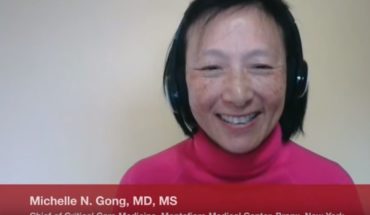In the UK and beyond, COVID-19 has been disproportionately deadly for people from Black, Asian and Minority Ethnic (BAME) backgrounds. The excess death rate among non-whites in the UK during the pandemic- which accounts for the documented COVID related deaths minus expected deaths- is strikingly high. The BAME community in the United Kingdom accounts for around 14% of the overall population, yet early data showed us that over a third of patients admitted into intensive care situations following the outbreak of the virus were from BAME backgrounds. Although the excess death rate fluctuates across different BAME groups, it is dramatically exaggerated within the Pakistani (2.8 times expected), Bangladeshi (3 times expected), Black African (4.5 times expected), and other Black communities (7.3).
As well as the disparity in patient fatalities and admissions, data published in the Health Service Journal details the disproportionately high rate of BAME healthcare professionals who have fallen victim to COVID-19. BAME groups account for around 21% of all staff across the National Health Service, yet data shows us that they account for 63% of overall deaths within the NHS.
In terms of the general pattern of vulnerability to this disease, it is important to note that around 70% of the UK’s Black African population are classed as overweight or obese, a characteristic which increases the likelihood of COVID-19 difficulties. Additionally, older Pakistani men are at greater risk of cardiovascular disease, and data shows that Bangladeshi and Caribbean individuals are more likely to report other underlying health problems such as diabetes. However, medical circumstances alone fail to explain the troubling statistics.
One of the attempts to seemingly galvanise everybody is to suggest commonality. We have heard from some quarters in recent weeks that the outbreak has been some kind of leveller for society. The evidence is in fact to the contrary. Scientifically, economically and socially, the people suffering at the sharpest end of COVID-19 are the same people who were most likely to suffer before the outbreak. Elderly people and those with existing respiratory problems and autoimmune diseases are at the greatest risk of suffering fatally after contracting the virus. Socially, the transition in education from the classroom to online has affected children in situations of poverty and low-income households, as they are less likely to have access to computers or tablets. And those living in substandard accommodation are reporting disturbingly high rates of infection and fatality.
Therefore, to explore the reasons BAME individuals have been disproportionately affected, we must consider socio-economic factors which may catalyse the spread of the coronavirus.
Transmission occurs at close quarters, and all BAME groups are more likely to live in overcrowded accommodation than the white British majority, plausibly a contributing factor towards the disproportionate numbers of deaths. Focusing specifically on London, 30% of Bangladeshi households are overcrowded. For the white British group, this figure stands at just 2%. Overcrowded households and multigenerational families under one roof during lockdown may have provided conditions that are highly conducive to viral transmission.
A further contributing factor concerns the overrepresentation of BAME individuals in dangerous, key worker roles. This is particularly striking for members of the black African group, where almost a third of the working-age population are employed as key workers. Added to this, nearly one in five work in health and social care specifically. With exposure to the virus through work greatly increasing the risk of infection, this too has likely played a role in the situation.
Yet even within the NHS workforce, BAME staff are more likely to fall victim to COVID-19. Although only 20% of all NHS nurses are BAME, they have accounted for 64% of deaths within this staff group. The reasons for this disparity remain unclear. However, given the overrepresentation of BAME groups in low-paid roles, there may be a correlation between pay bracket and level of direct exposure to the virus.
The implications for BAME groups become even clearer when the geographic distribution of the virus is observed. The impact of the virus has not affected all parts of the country equally, with large urban areas such as London hit particularly badly. As 60% of the overall Black population live in London– a city that, as of the 1st of May, had accounted for 20% of all confirmed COVID-19 cases in England and Wales- it is likely that region of residence has played a role in the high numbers of deaths. In addition, Birmingham and Manchester have diverse demographics, with substantial Pakistani, Bangladeshi, Indian and Black populations. The connectivity, inability to constantly observe social distancing and sheer population density in the UK’s urban centres means that BAME groups are more exposed to the transmission of infection.
On Tuesday 16th of June, Public Health England (PHE) published their long-awaited investigation into the root causes of the disproportionately high numbers of BAME deaths. Entitled ‘Beyond the data: Understanding the impact of COVID-19 on BAME groups’, the investigation pinpoints housing issues, financial vulnerabilities, occupational risks and experiences of racism as key social and structural causes of the situation.
Regarding occupational risks for example, the report corroborates the point made in this article that low pay may explain the disproportionately high numbers of BAME deaths within the NHS workforce: ‘BAME workers are in lower-paid roles within the NHS, which mean that these roles cannot be done remotely; this leads to greater exposure with other members of the community’.
Regarding experiences of racism, the report points out that ‘individuals from BAME backgrounds often have poorer access to healthcare services’ as well as poor past experiences of treatment. This can make a person far less inclined to seek care and assistance, even when it is gravely needed, something that has likely been a factor in the high numbers of BAME deaths.
PHE engaged with a number of key stakeholders in order to gain further insight into the relationship and impact of COVID-19 on BAME communities and strategies for addressing health inequalities. Using a range of requests for action made by the stakeholders, PHE has formulated a number of recommendations regarding how best to remedy the situation going forward. With the UK approaching the end of the first phase of the pandemic, these recommendations could not be more timely, as there is now an urgent need to build resilient and cohesive communities that can withstand further waves of adversity.
The first of the recommendations pertains to data collection. PHE state that high-quality, comprehensive ethnicity data collection should be mandatory for all NHS and social care departments. This should include the mandatory collection of ethnicity data at death certification, and ensuring that such data is readily available to local health and care partners.
A further recommendation concerns the development of culturally competent occupational risk assessment tools. It is essential that these tools can be employed in a variety of occupational settings and used to reduce the employee’s exposure to COVID-19.
In light of the previously-discussed relevance of underlying health conditions, the report recommends targeting cultural competent health promotion and disease prevention programmes. Such programmes should promote healthy weight, smoking cessation and the effective management of chronic conditions including diabetes, hypertension and asthma.
The other recommendations are as follows:
- Improving access, experience, and outcomes for BAME communities across care systems.
- Better COVID-19 education and prevention campaigns.
- An effective COVID-19 recovery strategy that actively reduces wider health inequality.
- More research to better understand the impact of COVID-19 on BAME communities.
Whilst the disproportionate numbers of BAME deaths are seemingly explained by a concoction of different factors, inequality emerges as a dominant theme. To ensure the situation does not continue, we must work to ensure equality for all people, regardless of background.
- What is a seizure? - 13th March 2025
- Febrile Convulsions and Seizures in Children - 13th March 2025
- Why women are less likely to receive CPR or survive cardiac arrest - 6th March 2025







